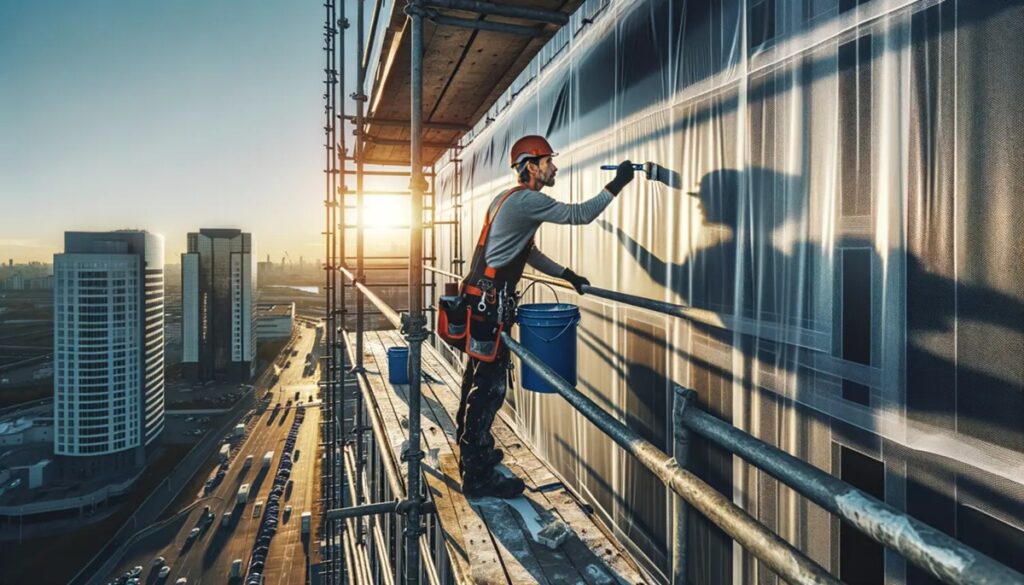The selection of a reputable waterproofing contractor Singapore represents perhaps one of the most consequential yet frequently overlooked decisions in the maintenance of structural integrity. In this tropical archipelago, where annual rainfall routinely exceeds 2,300mm and humidity hovers perpetually near saturation, the battle against water infiltration assumes dimensions of complexity unknown in more temperate climates.
The Science of Moisture Management
At its essence, waterproofing represents a sophisticated intervention in the thermodynamic relationship between structure and environment. Water—that deceptively simple molecule—possesses remarkable properties of infiltration, finding pathways through microscopic fissures and exploiting the slightest vulnerabilities in building envelopes.
The challenge manifests through multiple mechanisms:
- Hydrostatic pressure driving water through foundational concrete
- Capillary action drawing moisture upward through porous materials
- Condensation forming at dew points within wall assemblies
- Vapour diffusion transporting moisture through seemingly solid barriers
“The fundamental challenge lies not in merely repelling visible water but in comprehending the invisible journey of moisture through building materials,” explains a veteran Singapore waterproofing specialist with decades of experience in tropical applications.
The Diagnostic Imperative
Root Cause Analysis emerges as the critical foundation of effective intervention. The visible manifestation of water damage—the stain on a ceiling, the efflorescence on masonry, the blistering paint—represents merely the final expression of a complex migration pathway that demands forensic investigation.
Effective diagnosis encompasses:
- Thermal imaging to detect subsurface moisture concentrations
- Electrical impedance mapping to quantify moisture content
- Tracer dye testing to visualise water migration pathways
- Microbiological sampling to identify fungal contamination
The differential diagnosis distinguishes between condensation, rising damp, lateral penetration, and plumbing failures—each demanding distinct remediation approaches.
The Material Evolution
Membrane Technology has undergone remarkable transformation, progressing from rudimentary bituminous applications to sophisticated composite systems incorporating multiple protective mechanisms. Contemporary solutions leverage molecular engineering to achieve previously impossible performance metrics.
The modern arsenal includes:
- Crystalline admixtures that transform concrete into a self-sealing barrier
- Elastomeric membranes with unprecedented elongation properties
- Cementitious systems modified with polymer complexes
- Nanotechnology-enhanced coatings with hydrophobic properties
“The past decade has witnessed an extraordinary convergence of polymer chemistry and construction technology, yielding waterproofing systems that function not merely as barriers but as active responders to environmental challenges,” observes a Singapore waterproofing contractor at the forefront of material innovation.
The Application Precision
Installation Protocols demand meticulous attention to environmental variables frequently overlooked in standard construction practices. Surface preparation, ambient conditions, and application techniques collectively determine whether a theoretically effective system will perform as designed in actual field conditions.
Critical considerations include:
- Substrate moisture content and pH levels
- Ambient temperature and relative humidity during application
- Proper detailing at transitions, penetrations, and terminations
- Adequate curing periods before exposure to environmental stresses
The margin between success and failure often hinges on seemingly minor procedural details whose significance becomes apparent only years after project completion.
The Regulatory Landscape
Compliance Frameworks establish minimum performance standards that responsible practitioners routinely exceed. Singapore’s building codes address waterproofing with increasing sophistication, reflecting growing recognition of its critical importance to structural longevity and occupant health.
Key regulatory dimensions include:
- Performance testing requirements for waterproofing materials
- Workmanship standards for critical installation procedures
- Warranty requirements for new construction applications
- Periodic inspection protocols for existing structures
The regulatory evolution reflects an increasing appreciation that waterproofing represents not merely an aesthetic concern but a fundamental determinant of building performance and durability.
The Economic Calculus
Long-term Value emerges from initial investment in quality waterproofing that far exceeds the immediate cost differential between superior and marginal solutions. The financial analysis must encompass not merely the direct intervention expense but the cascading consequences of water infiltration throughout building systems.
The comprehensive economic assessment includes:
- Structural deterioration through reinforcement corrosion
- Decreased thermal performance due to insulation degradation
- Indoor air quality impacts from microbial proliferation
- Reduced service life of interior finishes and systems
“The true cost of inadequate waterproofing manifests not in the initial expense but in the accelerated deterioration of virtually every building system over subsequent decades,” cautions a Singapore waterproofing contractor specialising in remediation of prematurely deteriorated structures.
The Sustainability Dimension
Environmental Impact considerations increasingly influence waterproofing decisions as building owners recognise connections between moisture management and broader sustainability objectives. Energy consumption, material longevity, and indoor environmental quality all depend significantly on effective moisture control.
The sustainability connections include:
- Reduced energy consumption through preservation of insulation performance
- Extended material service life reducing replacement frequency
- Decreased volatile organic compound (VOC) emissions from mould-resistant materials
- Improved occupant health through prevention of microbial contamination
These interconnections position effective waterproofing as a foundational element of truly sustainable construction.
Conclusion
In the unrelenting tropical context of Singapore, where the atmospheric assault on building envelopes continues without reprieve, waterproofing transcends its traditional classification as a building trade to become a sophisticated scientific discipline. The consequences of inadequate moisture management—structural deterioration, compromised indoor environments, accelerated material degradation—accumulate silently until remediation costs far exceed what proper initial protection would have required. In this landscape of perpetual moisture, building longevity depends significantly on the expertise, material knowledge, and application precision offered by a qualified waterproofing contractor Singapore.
You may also like
-
Bright Ideas, Low Bills: A Utah Homeowner’s Guide to Energy-Efficient & Safe Holiday Lighting
-
Your Dream Home Journey: A Step-by-Step Guide to Custom Building in Loganville, GA
-
The Silent Guardians: Singapore’s Tree Pruning Heroes Unveiled
-
Key Factors To Consider When Looking For A Reliable Pavement Contractor
-
Breathe Better for Less: Exclusive Deals on High-Performance Air Purifiers

